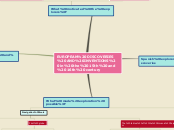EUROPEAN DISCOVERIES AND INVENTIONS in the 15th and 16th century
Spanish explorers and discoveries
Christopher Columbus
He arrived in the Carribean in 1492 and opened the Americas to later European explorers
Hernan Cortés
In 1519 he landed on the coast of Mexico and defeated the Aztecs inspiring other conquistadores
Francisco Pizarro
In 1513 he discovered the Pacific Ocean and in 1533, inspired by Cortés, he conquested the Incan empire in Perú
Amerigo Vespucci
He first demonstrated in 1502 that Brazil and the West Indies did not represent Asia's eastern outskirts but instead constituted an entirely separate landmass. Colloquially referred to as the New World, it came to be termed "the Americas", a name derived from Americus, the Latin version of Vespucci's first name
What motivated the explorers?
Desire and opportunity to get rich
The wanted jewels form India
They wanted gold from Africa
They wanted silk from China
Confidence and arrogance
Leaders of voyages were promised riches and aristocratic titles
Control of new lands and people
Belief in superiority of Christianity
Portuguese explorers and discoveries
Prince Henry
(NOT AN EXPLORER) Between 1425 and 1460 Prince Henry the Navigator trained Portuguese sailors to go exploring
Vasco da Gama
Between 1497 and 1499 he reached India for the first time and his discovery was significant and opened the way for an age of global imperialism and for the Portuguese to establish a long-lasting colonial empire in Asia
Bartolomeu Dias
He sailed around the southernmost tip of Africa in 1488, the first to do so, setting up the route from Europe to Asia later on
Ferdinando Magellano
He organised the Spanish expedition to the East Indies from 1519 to 1522, resulting in the first circumnavigation of the Earth, completed by Juan Sebastián Elcano.
What made exploration possible?
Navigation tools
Mercator projections
Invented in 1569 by Gerardus Mercator
A cylindrical map that really helped the navigators thanks to the lines of longitude and latitude
First globe
Invented in 1492 by Martin Behaim
Only accurate way to study the earth because it correctly represents the shape of it
The tables of the Almana Perpetuum
Published in 1446 by Abraham Zacuto
Astronomical tables that helped with celestial navigation
Ships
Caravels
Small fast ships maneuverable
Naos
Larger ships at end of 15th century
